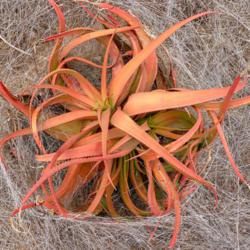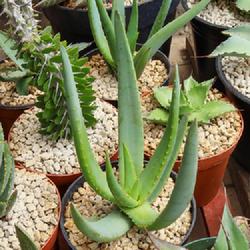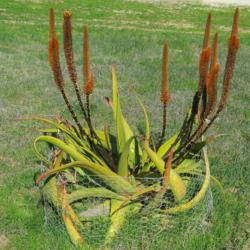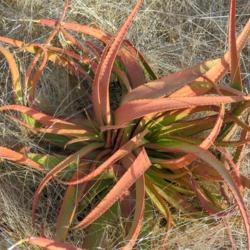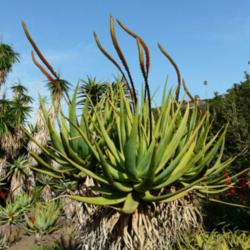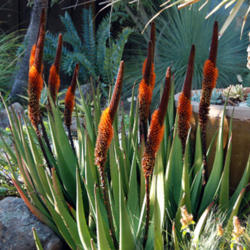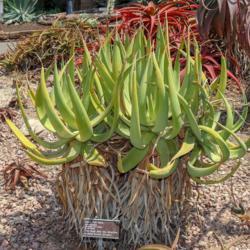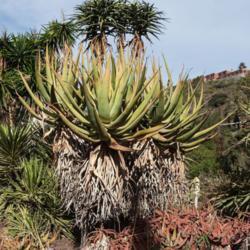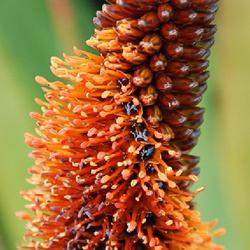General Plant Information (Edit)
| Plant Habit: |
Tree
Cactus/Succulent
|
| Life cycle: |
Perennial
|
| Sun Requirements: |
Full Sun
|
| Minimum cold hardiness: |
Zone 9b -3.9 °C (25 °F) to -1.1 °C (30 °F)
|
| Plant Height: |
Up to 10-12 feet |
| Plant Spread: |
Up to 10 feet |
| Leaves: |
Evergreen
|
| Fruit: |
Dehiscent
|
| Flowers: |
Showy
|
| Flower Color: |
Brown
Yellow
|
| Bloom Size: |
Under 1"
|
| Flower Time: |
Winter
|
| Suitable Locations: |
Xeriscapic
|
| Uses: |
Flowering Tree
Will Naturalize
|
| Wildlife Attractant: |
Hummingbirds
|
| Resistances: |
Drought tolerant
|
| Propagation: Seeds: |
Can handle transplanting
Other info: Sow seeds in sandy soil. Seeds germinate in a few weeks at temperatures between 68 and 75 degrees F. Seedlings need moist but well-drained soil.
|
| Propagation: Other methods: |
Cuttings: Stem
Offsets
Other: Stems cut below a node root easily. Cut a stem that has gotten leggy, let it dry out for at least a few hours to form a seal on the cut surface. Place the cutting in rooting medium kept moist, but not wet, until roots form.
|
| Containers: |
Needs excellent drainage in pots
|
- Cat's Tail Aloe
- Barolo
- Katstertaalwyn
- Suwopa
- Chestnut Brown Aloe
- Aloe
Posted by
Baja_Costero (Baja California - Zone 11b) on Jan 25, 2018 10:20 PM concerning plant:
Tree aloe from South Africa which may grow upright to 8-12 feet tall or as a shrubby collection of heads. Usually branching near the base or above.
The inflorescence develops during winter as an unbranched, densely flowered spike with short, reddish brown, bell-like flowers. The inflorescence typically but not always has a characteristic oblique bend. Multiple heads in bloom can be quite striking. The flowers open from the bottom up with a wave of orange exserted stamens and great quantities of sticky nectar. They make excellent subjects for close up photography, especially when that nectar reflects or transmits the light.
One of a few aloes with similar flowers. Can be resolved from A. vryheidensis (South Africa) based on the shape of the rosette. Similar to A. tauri (Zimbabwe) which grows a much shorter stem, also to A. spicata (South Africa) which can grow an intermediate length stem and typically has smaller rosettes.
Like some of these other aloes, its leaves may turn intense orange and red colors in response to stress, especially drought stress. This colorful foliage can provide striking seasonal interest in the garden.
« Add a new plant to the database
» Search the Aloes Database: by characteristics or by cultivar name
« See the general plant entry for Aloes (Aloe)
« The Aloes Database Front Page
« The Plants Database Front Page
